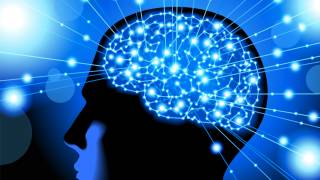Researchers Try to Improve Math Skills With Electrical Zaps to the Brain
Source: blogs.discovermagazine.com
New neuroscience research is not only adding to our understanding of math and number processing in the brain, it’s also suggesting a way to improve learning in the math-deficient.A small new study published in Current Biology involved electrical stimulation of the parietal lobe, a part of the brain involved in math learning and understanding. When this area was stimulated, students performed better on a math problem test. Said study leader Cohen Kadosh:
“We’ve shown before that we can induce discalculia [an inability to do math], and now it seems we might be able to make someone better at maths, so we really want to see if we can help people with dyscalculia…. Electrical stimulation is unlikely to turn you into the next Einstein, but if we’re lucky it might be able to help some people to cope better with maths.” [BBC News]
Dyscalculia is a learning disability similar to dyslexia, in which a person has an innate difficulty with learning or understanding math. People with this condition can have trouble with daily arithmetic, telling left from right, and telling time on analog clocks. Some studies estimate up to five percent of the population suffers from dyscalculia, and about 20 percent have less severe troubles with math.
 For the experiment, 15 students were hooked up to a transcranial direct current stimulation (tDCS) machine, which stimulates the brain through the skull with 1 milliamp of electricity, and were given either a positive (right to left) zap to their parietal lobe for 20 minutes, a positive zap for 30 seconds, or a negative (left to right) zap for 20 minutes (five students per group). The current produced a tingling sensation in the scalp, but it didn’t hurt. Then the students were trained to learn the assigned number values of made-up symbols.
For the experiment, 15 students were hooked up to a transcranial direct current stimulation (tDCS) machine, which stimulates the brain through the skull with 1 milliamp of electricity, and were given either a positive (right to left) zap to their parietal lobe for 20 minutes, a positive zap for 30 seconds, or a negative (left to right) zap for 20 minutes (five students per group). The current produced a tingling sensation in the scalp, but it didn’t hurt. Then the students were trained to learn the assigned number values of made-up symbols.To replicate what children go through when they first learn numbers, the researchers presented the volunteers with two symbols at a time and asked them which one had a higher value. At first, the volunteers had to guess, because they had never seen the symbols before. But as the training progressed, those volunteers who remembered their correct guesses began to learn the relative value of all nine symbols. [ScienceNOW]
The students got hundreds of guesses each training day, which the researchers predicted would allow the students to gain an understanding of how the nine symbols ranked.
Read the full article at: discovermagazine.com
This method has been demonstrated before. They’ve already studied negative reinforcement on ESP ability - (link) ;)






















